Ectodidymella nigrificans (P. Karst.) L.W. Hou, L. Cai & Crous, comb. nov.
MycoBank number: MB 833507; Index Fungorum number: IF 833507; Facesoffungi number: FoF. Fig. 14.
Basionym: Sphaeronaema nigrificans P. Karst., Meddeland. Soc. Fauna Fl. Fenn. 16: 17. 1888. (as “Sphaeronema”).
Synonyms: Phoma nigrificans (P. Karst.) Boerema et al., J. Phytopathol. 115(3): 270. 1986. Didymella macropodii Petr., Hedwigia 68: 219. 1928.Plenodomus macropodii Petr., Hedwigia 68: 237. 1928.
Description: Boerema & de Gruyter (1998) and Petrak 1928.
Materials examined: Germany, from Brassica napus (Brassicaceae), 1982, G.H. Boerema, culture CBS 100190 = PD 82/736. The Netherlands, from an un- identified crucifer (Cruciferae sp., Brassicaceae), 1984, G.H. Boerema, culture PD 84/512.
Notes: Sphaeronaema nigrificans was described from Armoraciae rusticanae in Finland, with conidia measuring 6–9 × 2–3 μm (Karsten 1888). This species was later recombined into Phoma as Phoma nigrificans, while its connection with Didymella macropodii was established by Boerema et al. (1986). Later Boerema et al. (2004) described CBS 100190 and CBS 100191 as representative cultures of Phoma nigrificans based on morphology. However, CBS 100191 clustered with Phomatodes nebulosa (Chen et al. 2015), distinct from CBS 100190, which was also examined in the present study (Fig. 1). Isolate CBS 100190, together with PD 84/512 formed an independent clade which was distant from other genera in Didymellaceae. Morphologically CBS 100190 agreed well with the original description of Sp. nigrificans by producing comparably sized conidia (6–9× 2–3 μm vs. 4.5–8× 2–3.5 μm). Hence, a new genus Ectodidymella was introduced to accommodate this species.
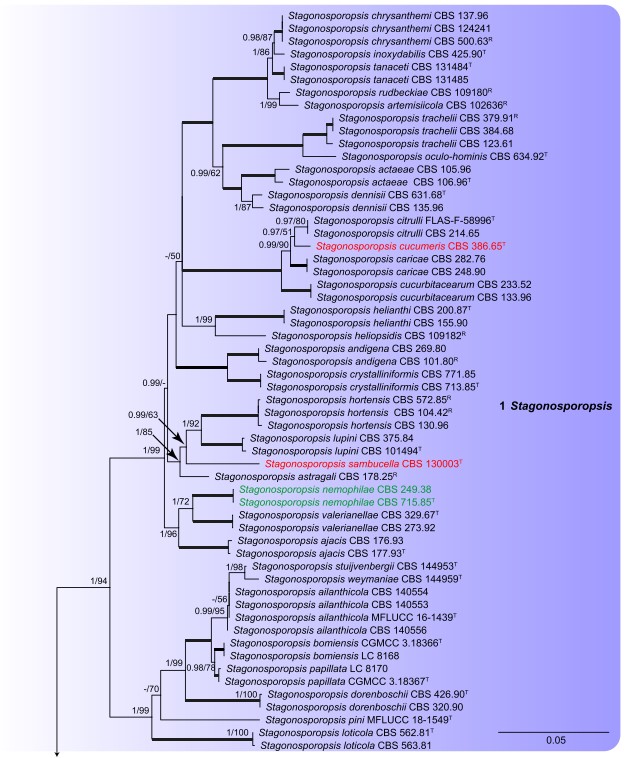
Fig. 1. Phylogenetic tree inferred from a Maximum Likelihood analysis based on a concatenated alignment of LSU, ITS, rpb2 and tub2 sequences of 597 strains representing Didymellaceae and outgroup sequences. The RAxML bootstrap support values (MLBS) above 50 % and Bayesian posterior probabilities (BPP) above 0.80 are given at the nodes (BPP/MLBS). Some of the basal branches were shortened to facilitate layout (the fraction in round parentheses refers to the presented length compared to the actual length of the branch). The scale bar represents the expected number of changes per site. Genera are delimited in coloured boxes, with the genus name indicated to the right. Strains with special status are indicated with a superscript letter after the accession number (R: representative; T: ex-type). The new species are printed in red font and new combinations in green font. The tree is rooted to Coniothyrium palmarum culture CBS 400.71, Neocucurbitaria aquatica culture CBS 297.74 and Pleiochaeta setosa cultures CBS 496.63 and CBS 118.25.
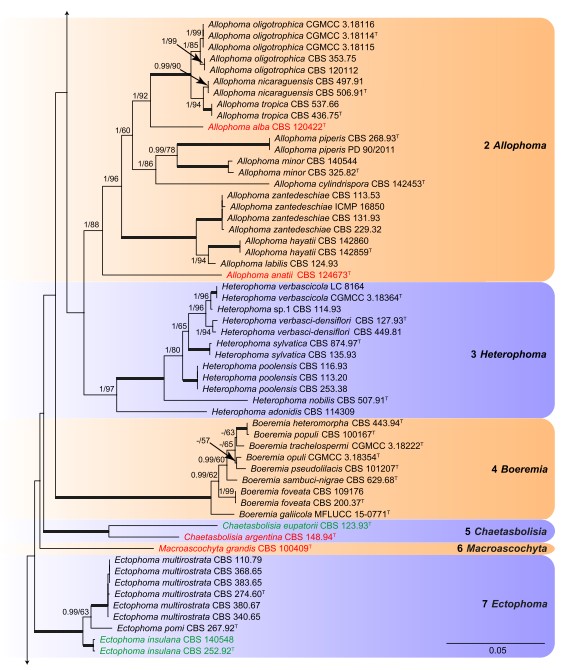
Fig. 1. (Continued).
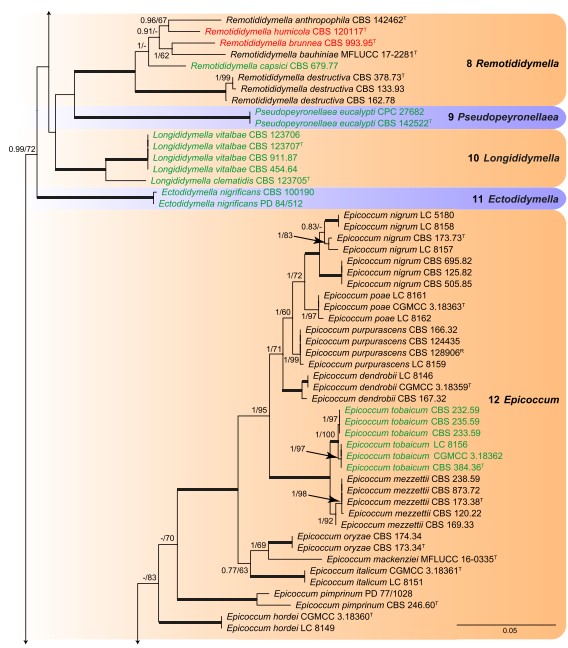
Fig. 1. (Continued).
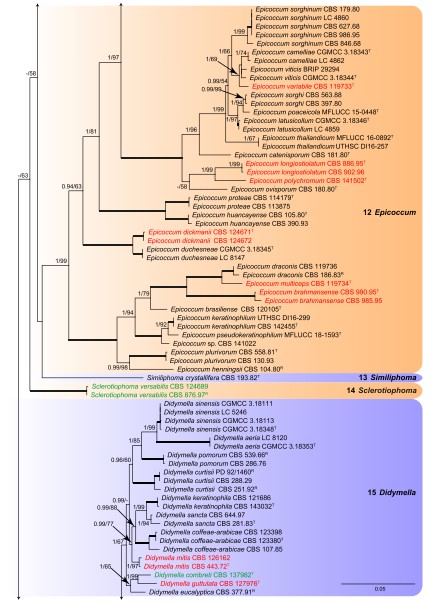
Fig. 1. (Continued).
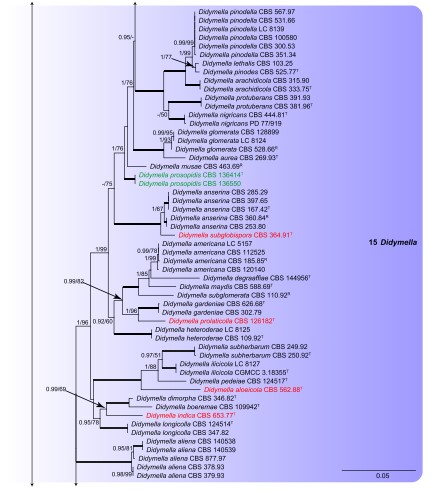
Fig. 1. (Continued).
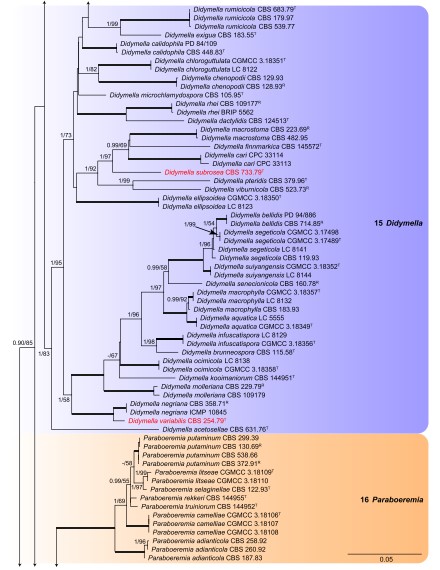
Fig. 1. (Continued).
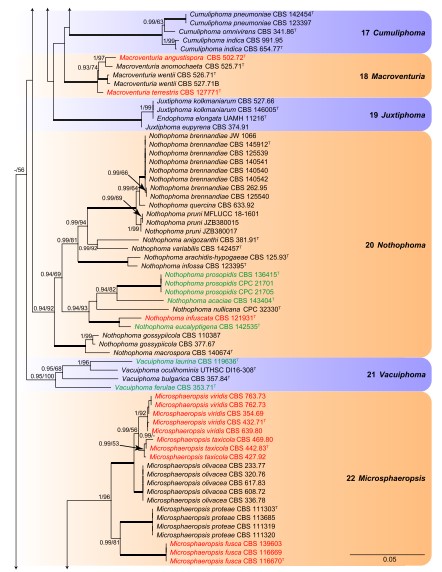
Fig. 1. (Continued).
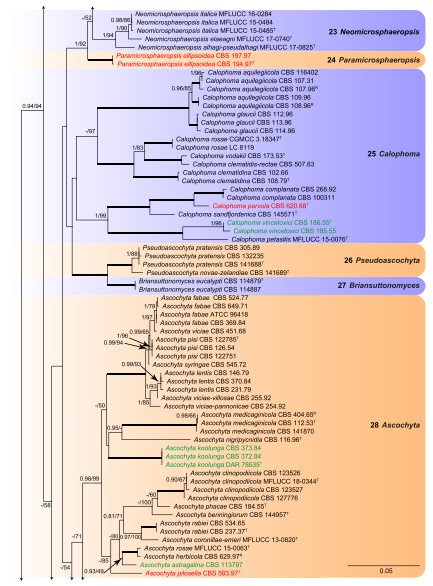
Fig. 1. (Continued).
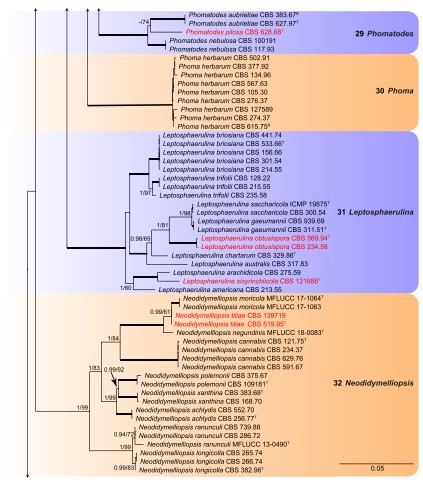
Fig. 1. (Continued).
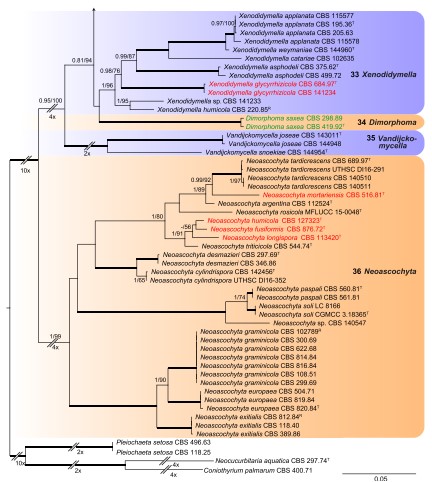
Fig. 1. (Continued).
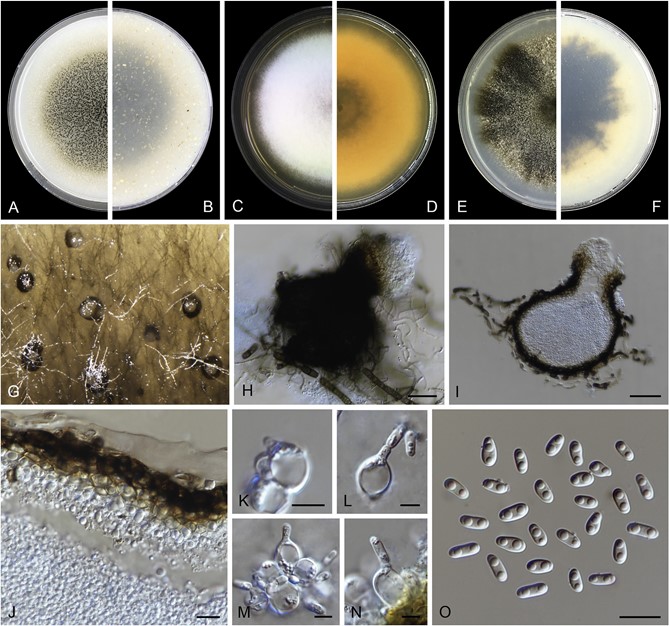
Fig. 14. Ectodidymella nigrificans (CBS 100190). A–B. Colony on OA (front and reverse). C–D. Colony on MEA (front and reverse). E–F. Colony on PDA (front and reverse). G. Pycnidia forming on OA. H. Pycnidium. I. Section through pycnidium. J. Section of pycnidial wall. K– N. Conidiogenous cells. O. Conidia. Scale bars: H–I = 50 μm; J, O = 10 μm; K–N = 5 μm.
